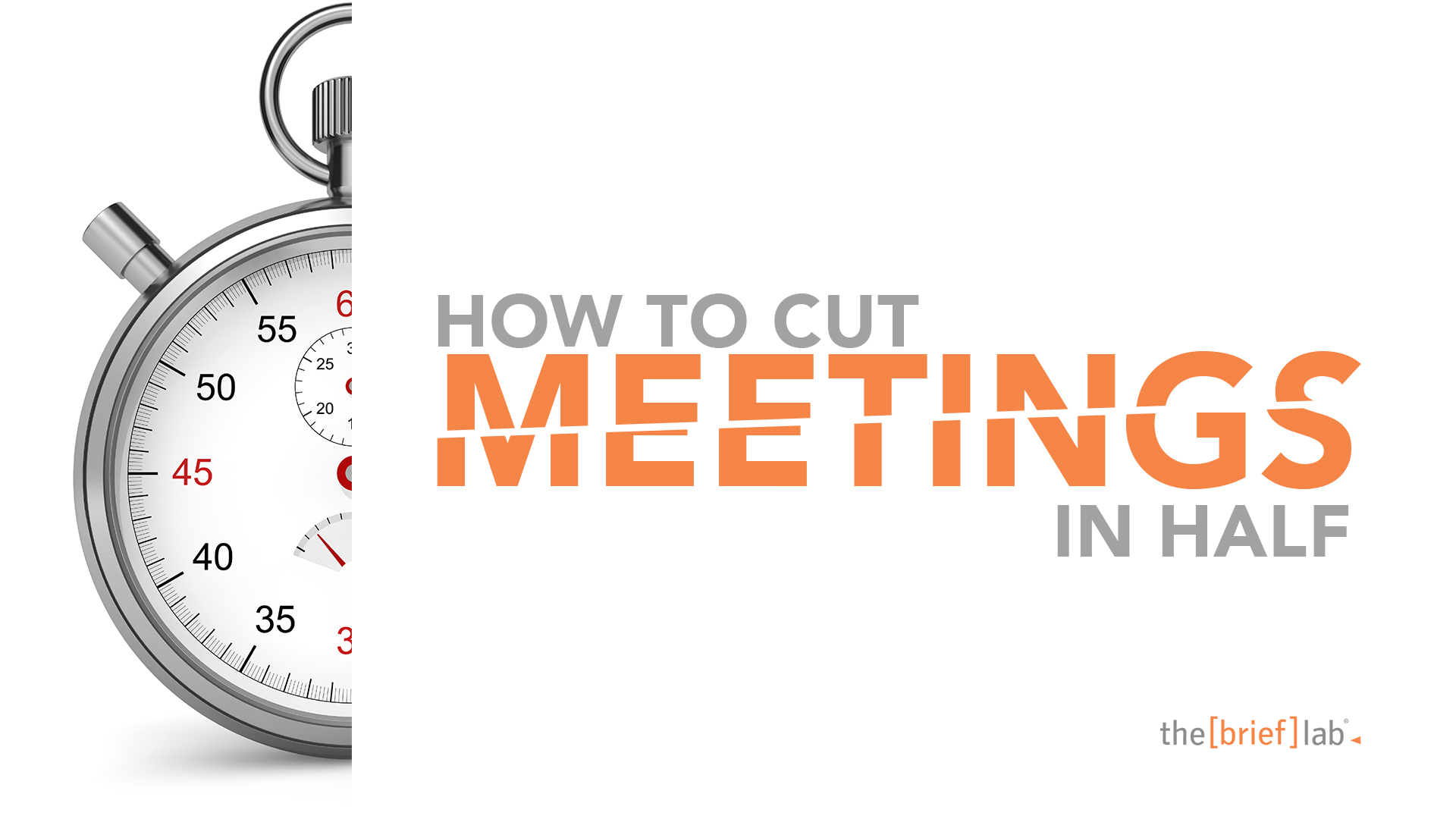
The Productivity Challenge: Meetings as a Major Distraction
“What gets in the way of your productivity at work?”
I ask this question all the time when I work with leadership teams. I hear a lot of the same answers: interruptions, paperwork, sorting through email, bureaucratic processes, etc. Some are more introspective: “I don’t manage my time well”…or “I get distracted too easily.”
But there is one answer I hear more than all the others combined: meetings.
The Culture of Meetings
The frustration, sarcasm and general helplessness I observe when people talk about meetings is striking. One young leader said it best: “We have so many meetings, I keep thinking ‘when the hell am I supposed to do the job they’re actually paying me to do?’” It’s a paradox and a big problem that many organizations face today.
Why Meetings Often Hinder Productivity
Meetings are meant to facilitate work, but they often keep work from getting done. It’s like the oil in a car. It makes the engine run smoothly with minimal friction and maximum efficiency. But if the oil isn’t changed, at some point, it does the exact opposite of its intended purpose. It actually slows the car down, gums up the engine and destroys the car from the inside (My cousin never changed the oil in his first car. That car is sitting in a junkyard somewhere in Illinois.)
The Need for Shorter Meetings
The worst part…this “culture of meetings” is becoming the status quo. So what can we do? How can we do anything when everyone around us thinks the 60-minute meeting is “just the way it is”? You’ve probably heard of Parkinson’s Law “work expands so as to fill the time available for its completion.” If you set a 60-minute meeting, you’ll get a 60-minute meeting (or longer).
Cut Meeting Times in Half
Here’s a bold experiment, and it’s something we challenge all of our clients to do… cut your next meeting time in half. If it’s 60 mins, make it 30, if it’s 30 make it 15 and so on. I guarantee you the work will adjust to fit the meeting time. Why? Because it has no choice.
4 Strategies to Cut Meeting Time in Half
Easier said than done right? Well here are 4 things that can turn 60 minutes into 30:
1. Send Pre-Reading Materials
This saves a lot of time at the beginning of the meeting. People usually make two mistakes when it comes to pre-reading: they don’t send anything or they send everything. Often a short, written summary with a link or attachment is plenty. Make sure you include the meeting objective when you send the pre-reading. If people won’t do pre-reading, then start the meeting with 5 mins of silence so they can all read it. They can read faster than you can present.
2. Create a Specific and Realistic Agenda
Many meeting agendas are vague with big swaths of time reserved for “updates” and “discussion.” Others are way too ambitious, cramming several big topics into a 60-minute period. This results in a lack of focus where a lot gets said but little gets decided. Of course, this assumes you have an agenda. If you don’t have an agenda…STOP!!! For the love of productivity 🙂 Do not proceed until you send a specific agenda to the team.
3. Set Time Expectations
Tell attendees “Let’s see if we can do this meeting in 15 minutes, alright? Here’s what we’re going to focus on…” Everybody wants more time back.
4. Focus on Progress Instead of Activity
A lot of recurring team meetings begin with “Let’s go around the room and hear what everyone is up to.” This is a problem because everyone feels like they have to say something. If they don’t have anything of substance, then they talk about activity. Not useful. A better way to get to the good stuff would be to ask “Does anyone have any significant progress or issues to report?” If they don’t, that’s fine. Move on. If someone volunteers an activity report, gently remind them you’re looking for progress not activity.
Making Meetings More Efficient
Efficient meetings move work forward. Setting a time limit will force us to prepare and run more productive meetings. So I’m curious, how have you made meetings more efficient?
About the author: Charley Thornton is a lead instructor for the Brief Lab and the Sheffield Company. He specializes in conducting Narrative Mapping Workshops, BRIEF Workshops, creative planning and strategic consulting. He’s worked with top Fortune 500 companies from Harley Davidson to elite Special Operations Units within the Military. Follow Charley on LinkedIn.